If your lawn is more than 20 years old and looks tired and hopeless, or you have constantly been battling with lawn diseases, pests, and weeds, your best bet to establish a healthy lawn is to kill the entire yard and start from scratch. The trick might also come in handy when removing natural grass and installing artificial turf on your property. However, is it worth killing your entire lawn and starting fresh? And when should you do it? Keep reading for tips on killing a lawn and starting over.

If your lawn is in poor health, the best option to establish a healthy lawn is by starting over.
When deciding whether or not you should kill the whole lawn and start over, you must ensure that you do not waste any money, time, or effort. Also, you do not want to make your neighbors unnecessarily uncomfortable. Killing all the grass and starting from scratch is only a good option when there is no way around it.
All in all, destroying everything on the lawn and starting afresh should only be used as a last resort. And there are many instances when this could be the case. So, continue reading to see if it is the right choice for you and how to do it correctly.
Things To Consider Before Starting Over
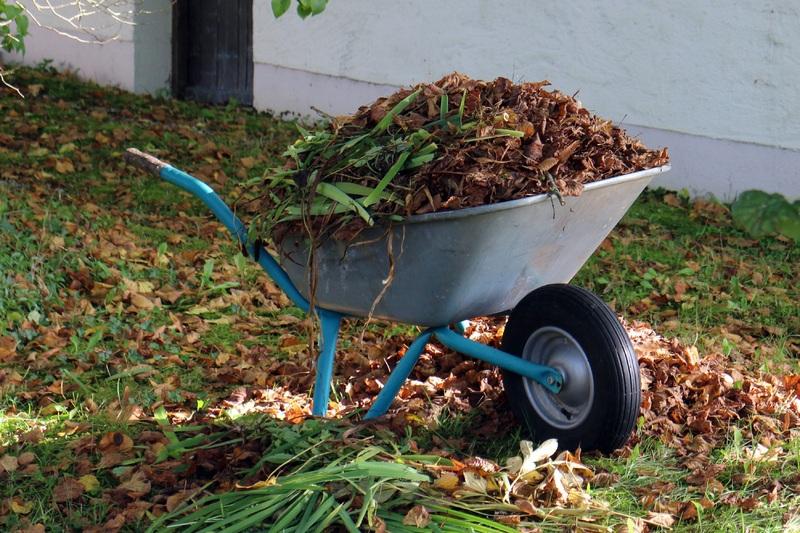
Killing a lawn and starting over is a significant investment of time, money, and effort.
An ugly, unsightly yard can be super embarrassing. Moreover, it can ruin the aesthetics of an otherwise beautiful and modern home. Luckily, there are many methods that you can use to get rid of your ugly yard and restore it to its previous glory and glow.
However, there are a few things that you should consider before you decide to kill your entire lawn and start over. It is because it is easy to make a mistake when going through the process, and you can end up with an ever worse-looking yard.
RELATED: Should Mowing Lawn Be Done Before Or After A Weed And Feed Treatment? SOLVED
Consider The Work Involved
Killing all the grass in your yard, planting new seeds, and establishing a healthy turf is no easy task. You will need to invest quite a bit of time, money, and effort.
It would help if you also remembered that some methods you might want to use to get the job done could negatively affect the environment—for instance, the large-scale use of herbicides. Therefore, when making your choice, beware of how you carry it out.
Know The Rules & Restrictions
Before you dig up your entire lawn to kill the grass to start over from scratch, make sure you find out about the local environmental laws. In addition, also talk to your local homeowner’s association (if there is one) and make sure everything is in order.
Check With Your Neighbors
Also, ensure that before starting such a largescale landscaping project in your yard, your neighbors are informed beforehand. It is not necessary, but it is good etiquette.
Know Your Options
As already stated, several methods exist to kill your entire lawn and start over afresh. We will talk about these methods in detail in this article. First, however, I want to emphasize that you should use a way that best suits your needs and preferences.
Also, you can use different approaches on different parts of your lawn.
Beware Of The Underground Systems
If sprinklers are installed on your property, ensure you know where all the pipes and drainage holes are before digging the grass.
Also, phone, internet, sewerage, gas, and electricity wires might be running underground in your yard. So, please ensure you know where they are to avoid damage during the digging and tilling process.
Re-do Or Repair Your Lawn
Lastly, you want to ensure that you only undertake this option if it is the only way.
So, look closely at and around your lawn. If the problem is fixable any other way or without plowing it all under, try to repair and revamp your yard. If not, you can go ahead and remove the existing turf. Below are a few scenarios in which you can do it.
Why Might You Want To Start Over A Lawn?
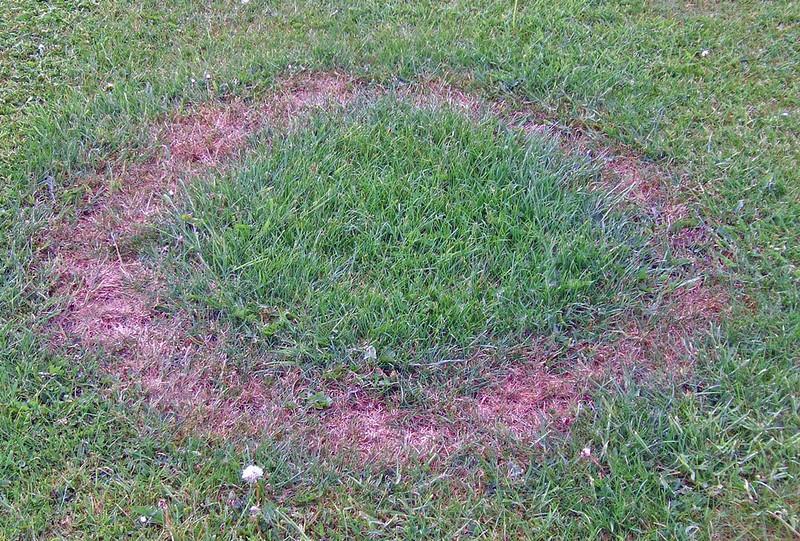
If your lawn is battling turf diseases and they keep returning, you might want to start over.
There are some instances when there is no way of reviving your lawn without starting over. Below are a few examples, and they might be something you could relate to too.
You Want To Put Down Artificial Grass
Over recent years, artificial grass has become very popular in the United States and many other parts of the world. And it is not hard to see why! It requires little to no care; it looks fantastic, and once installed, it can last for many years.
However, you cannot just install artificial grass on your turf.
It would help if you had bare ground. Therefore, you will have to kill your existing turf and then continue installing synthetic turf, as it will be much easier now!
Uneven Lawn With Severe Drainage Issues
Sometimes, no matter how many drainage holes and pipes you install around your lawn, the water won’t just start flowing but instead make puddles and cause the ground to become uneven in places. The problem could be fixed by reading and releveling the site.
However, to properly grade and relevel a messed up lawn with severe drainage issues, you will have to pull up all the grass and introduce tons of topsoil & sand.
Also, starting over, you can introduce grass species that need less care.
Your Lawn Is Infested With Moss & Weeds
Another reason you might want to kill your entire lawn and establish a new one from scratch is because it is infested with moss and nasty lawn weeds that won’t just go away, no matter what you do and try. The weeds and moss keep coming back again & again!
Killing the lawn to the last grass blade will eliminate any weeds that might invade your property, be it: grassy weeds, grass-like weeds, or broadleaf weeds.
However, how many weeds necessitate a whole yard cleanup? A good rule of thumb to follow is that if your lawn is more than fifty percent bare ground or weeds, it is generally a good idea to all the grass in it and start over from scratch.
How To Kill The Grass On Your Lawn?
Now that you understand the scenarios in which you might want to kill your entire lawn and start over, as well as what things you need to consider before starting such a large-scale project. Let’s discuss some tried and true methods for killing a lawn and starting over.
1. Solarization: Using Sun To Kill The Grass

Soil solarization is an eco-friendly method of using the sun’s power to kill weeds, pests, and grass.
Soil solarization is a preventive method of killing weeds before they even sprout. However, you can also use it to kill the grass on your property. Solarization does not require using harsh chemicals on the ground or investing in heavy labor to remove the grass.
In solarization, you use the sun’s energy to cook up any plants, weeds, seeds, and grass in the upper layer of the soil. It removes any vegetation on the ground, and you have sterile soil again to start a new lawn from scratch. But how do you do it?
While there are many ways to solarize the soil, laying a thick sheet of plastic over the ground is probably the most effective and common. However, it is not only the approach that needs to be effective; timing is of the essence here too.
For best results, you should solarize your soil in the summer. It is because, during summer, you can make the most out of the sun’s heat, and then in fall, you can start a new lawn which is the best part of the year in most parts of the United States to plant grass.
So, how do you solarize the soil? Please read on to find out!
How To Solarize? A Brief Guide
Before discussing solarization, let’s see what materials you need to do this job.
Materials you Will Need
- Rake
- Tilling Equipment
- Thermometer
- A Thick Plastic Sheet
Step By Step Guide For Solarization
- Mow your lawn as short as you can and bag the grass clippings.
- Next, break up the soil in the area you want to solarize.
- Also, remove debris such as stones, sticks, and leaves from the site.
- After that, water the place heavily and saturate the ground at least 12 inches deep.
- Then, cover the desired area with a clear (at least 4 mm thick) plastic sheet.
- Leave a slight hump in the middle, so rainwater drains off to the sides.
- Also, extend the plastic sheet about one foot beyond the edge of the lawn.
- Next, place stones on the sides to anchor the sheet or bury the sheet in the soil.
- If you have lawn sprinklers installed, please ensure they are turned off.
- Wait for about six to eight weeks and answer the neighbors’ questions.
- Remove the plastic from the ground, and your soil is ready to replant new grass.
RELATED: A Complete Guide To Top Dressing A Lawn: Benefits & How To Do It Correctly!
2. Digging Up The Soil To Remove The Grass
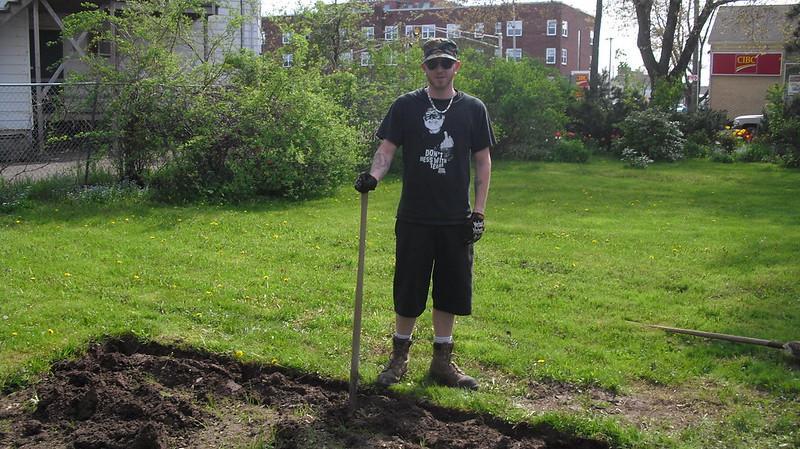
Digging produces quick, clean results and allows you to plant new grass immediately.
Solarization is a great way to kill all vegetation on the ground. However, it is slow, and in some places where temperatures are low, it might not work. You can try digging up your yard to remove grass and other vegetation for such sites.
Digging up works best if you want quick results without using chemicals. You can dig up your lawn manually using a shovel if you have the time, the muscle power, and a small yard. Otherwise, you should rent a rototiller or motorized sod cutter.
Below are a few more pros and cons of using the digging method to kill a lawn.
| Pros | Cons |
| It is inexpensive, especially when done with a shovel. The killed sod returns nutrients to the soil. It does not necessitate the use of herbicides. It is the quickest method and takes only a day. | Motorized sod cutters and tillers require gas. It is a highly labor-intensive process. Digging too deep can damage plant roots. Not as effective for deep-rooted grass types. |
Let’s discuss how to dig up a lawn using shovels and machines.
How To Dig Up A Lawn With Shovel?
If you have a small lawn, dig up the grass manually with a shovel. Here is how:
- Start by mowing your lawn as close to the ground as possible.
- Once cut, water your property so the soil is easy to work with when digging.
- After watering, you must wait two to three days to start digging.
- Then, use an edger or spade to cut your grass into separate narrow sections.
- When cutting the grass into different sections, ensure they are four inches deep.
- Once done, use the shovel to dig up the grass at one end of the strip.
- To do this, slide your shovel under the turf and cut the grass at the roots.
- Following that, water your lawn again so the remaining grass raises its head.
- Keep an eye on the yard and cut any grass that reappears in the coming days.
How To Dig Up A Lawn With Sod Cutter?
If you have a large lawn, manual digging isn’t for you. You will have to use a sod cutter or rototiller to get the job done. So, let’s first discuss how to remove grass using a sod cutter.
- Once again, mow your lawn as short as you can.
- Also, water the ground so the soil becomes soft and easy to work with.
- Please wait a few days, and move the sod cutter on your lawn.
- The sod cutter will create about one-and-a-half-foot broad sections of the sod.
- Once done, remove the sections and compost them or throw them away.
- You can also use these sections grass-side down to fertilize your ground.
- If you do so, cover the grass-side down sod with a thin layer of compost.
- Once the sod has died, mix it in the soil with a rototiller.
How To Use A Rototiller To Dig Up The Grass?
Use a rototiller if you do not want to remove grass from your lawn but mix it in the ground to return nutrients to the soil. A rototiller is like a heavy-duty grass blender that churns up topsoil and grass, and all you have to do is move across your lawn.
In my experience, a rototiller works best when the grass is cut short and the soil is moist. Also, you can add a bit of compost to the ground before using a rototiller.
Then give your lawn at least two passes with the machine, and you are done!
3. Using Herbicides To Kill The Grass
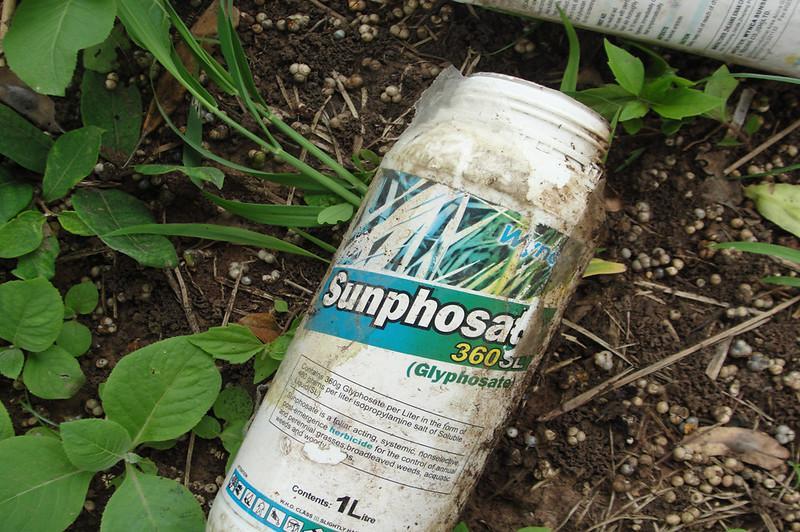
Using herbicides is probably the easiest and quickest way to kill an entire lawn.
If soil solarization does not work for you and you also do not want to work your sweat off by digging up the yard to kill grass, you can use chemicals to do the job. Simply buy a post-emergent, non-selective herbicide from the market and spray it on your lawn.
However, you cannot just use any herbicide on your property. You first need to learn what kind of weeds and grasses you have on your lawn and then buy the appropriate one.
If you spray your entire property with chemicals, it better work!
How To Choose The Right Herbicide?
When choosing a non-selective herbicide to kill the grass in your yard, you can select either ready-to-use, premixed types or choose from concentrates that need to be mixed before use.
Concentrates that need to be mixed before use a usually of higher quality and are often professional-grade products. You will have to buy them online or separately.
However, if you do not know how to mix herbicides or have the patience to learn how to do it, you should choose a premixed, general-purpose herbicide. These herbicides can also be quickly brought from local gardening stores and online.
However, if you have a large lawn and want to save some bucks, I suggest you learn how to mix herbicides, as premixed types can be expensive.
Consider The Weather When Using Herbicides
Even if you buy the right fertilizer but do not use it at the right time, it will not produce desired results. The use of herbicides is heavily dependent on the weather.
For example, spraying a herbicide on your lawn right before heavy rain will wash it off your grass and soil, rendering the treatment useless. Also, you can not use a herbicide in solid winds. The herbicide could end up in places you do not want.
Rain can also cause chemical runoff, which could contaminate nearby water sources. In addition, you still have to dig up grass and dead weeds once the herbicide does its job. So, even though effective, herbicide use comes with some cons.
How Long Does Herbicide Take To Kill The Grass?
Once you apply a general-purpose, non-selective herbicide to your yard, the chemicals can take one to two weeks to kill the grass and weeds. However, please remember that you might have to spray more than once to destroy the lawn. So, plan accordingly.
It is often a problem in well-established yards. Therefore, I highly recommend carefully observing your property’s condition before starting over. It is not worth destroying and starting the lawn from scratch if the grass and lawn are still in good shape.
I also recommend using a herbicide with glyphosate as its main ingredient. It is because glyphosate-based herbicides often have fewer residual effects. And, if you use a herbicide the wrong way, it could have quite nasty effects on the local ecosystem.
Consider Safety
When using a herbicide to kill all grass on your property, it is essential that you follow all directions and guidelines on the product label and if there are any local guidelines regarding the use of herbicides on lawns. It is vital to the safety of you and the environment.
Also, ensure that you wear all the proactive equipment when spraying the chemicals on your property and that the pets and children stay off the lawn for a few days.
Lastly, when using these products, get the timing right and use them when the grass is in its active growth stage. Otherwise, the herbicide might not work.
RELATED: How Cold Is Too Cold To Fertilize Your Lawn? A Comprehensive Guide
Replacing The Topsoil & Nutrients

Topsoil is the most nutrient-rich soil layer because it’s the first to receive the nutrients.
You also remove nutrients from the ground when you dig up the soil to kill grass or remove topsoil to eliminate the dead grass after solarization or herbicide treatment.
Before planting new seeds or sod on the lawn, these nutrients must be replaced. Failure to do so could result in weak grass growth, creating an unhealthy and unsightly yard.
To fix this issue, you can easily buy topsoil combined with compost from your local nursery store or gardening shop.
Also, these mixes are inexpensive and always worth the cost, as they will give your new seeds or sod an excellent head start.
Planting New Grass
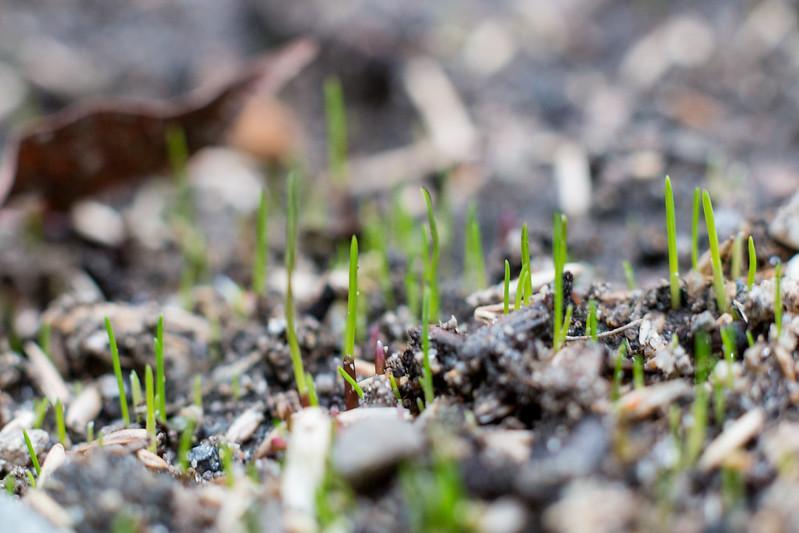
Make sure you wait for the right time of year to plant new grass seed and install sod.
Once you have successfully removed all the grass from your lawn and revitalized the topsoil, it is time to start a new yard. To do this, you have two choices. You can either plant seeds or install sod unless you want to go for artificial turf once and for all.
However, before you can do any of that, you will have to prepare the soil so your new grass can happily thrive and grow on your property without any issues.
- Make sure the ground is properly leveled and graded.
- Add a starter fertilizer to give seeds and sod a head start.
- Then, plant the seeds or the sod, whatever you prefer.
- Ensure they stay moist during the first few days of the plantation.
- Once the grass is well established, water deeply and infrequently.
- Fertilize according to the turf type and soil test results.
- Mow the grass when it reaches the appropriate height and dethatch as needed.
And, soon, you will have a lawn that will be the envy of the entire neighborhood.
Final Thoughts
Sometimes, the only way to establish a healthy, thriving yard is to start from scratch. However, before starting, you must get rid of the existing grass. Now you can use any methods suggested above, but I prefer doing it with a sod cutter.
I know it takes time and is labor intensive.
Still, I think it is better than using chemicals that can harm the environment and solarization, which takes months to complete before you can start over.
Besides, if you work hard for your lawn, you will value it more.
Frequently Asked Questions (FAQs)
How Long After Killing Grass Can I Reseed?
The duration you have to wait to plant the grass once you kill it depends on the method used. Also, you will need to consider the time it takes to prepare the soil. Sometimes, it takes only a day and, in other cases, a few weeks before you can reseed.
What Is The Best Time To Renovate Your Lawn?
The best time to renovate your lawn depends on your region and the grass type. Ideally, it should be done when the weather is mild, and the grass is in its active growth stage. It will allow your new grass and lawn to establish quickly and with no issues.
What to do after killing the lawn?
Once you kill the yard, you need to remove all the dead vegetation from it so that you can plant new grass seed or sod.
You might have to regrade and introduce fresh topsoil to compensate for the lost nutrients, among other things depending on the yard’s condition.
How do you remove old grass and lay new turf?
You can remove old grass with a shovel to lay new turf if you have a small yard. However, if your lawn is large, you must use a sod cutter to remove old grass. You can also use a rototiller to mix the old grass into the soil before laying new turf.
Will grass grow back after grass killer?
If the herbicide was misused at the wrong time or in an insufficient dosage, the grass might recover and grow back in time.
Most herbicides kill what they touch and do not stay active very long in the soil. So, your lawn grass might sprout back.
Sources For Further Reading
UC Healthy Lawns—Complete renovation: Kill the existing turf and weeds. Agriculture and Natural Resources, University of California. (2023). Retrieved 1 January 2023, from https://ipm.ucanr.edu/TOOLS/TURF/RENOVATE/comkill.html
Lawn Renovation and Overseeding | University of Maryland Extension. College of Agriculture and Natural Resources. (2023). Retrieved 1 January 2023, from https://extension.umd.edu/resource/lawn-renovation-and-overseeding
Renovating the Home Lawn – 7.241. Colorado State University Extension, Fort Collins, Colorado 80523 USA. (2023). Retrieved 1 January 2023, from https://extension.colostate.edu/topic-areas/yard-garden/renovating-the-home-lawn-7-241/
Editor’s Recommendations
How To Grade A Yard By Hand? Everything You Need To Know!
How To Fix A Lawn Full Of Weeds And Revamp Your Lawn | The Ultimate Guide
Is Putting Too Much Lime In Your Yard Okay? A Beginner’s Guide To Liming







